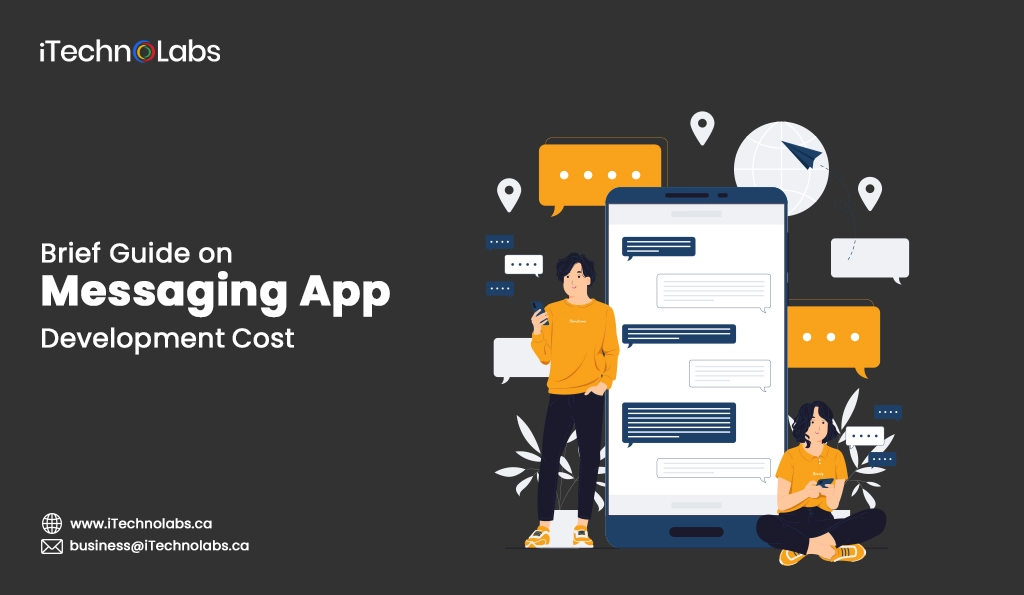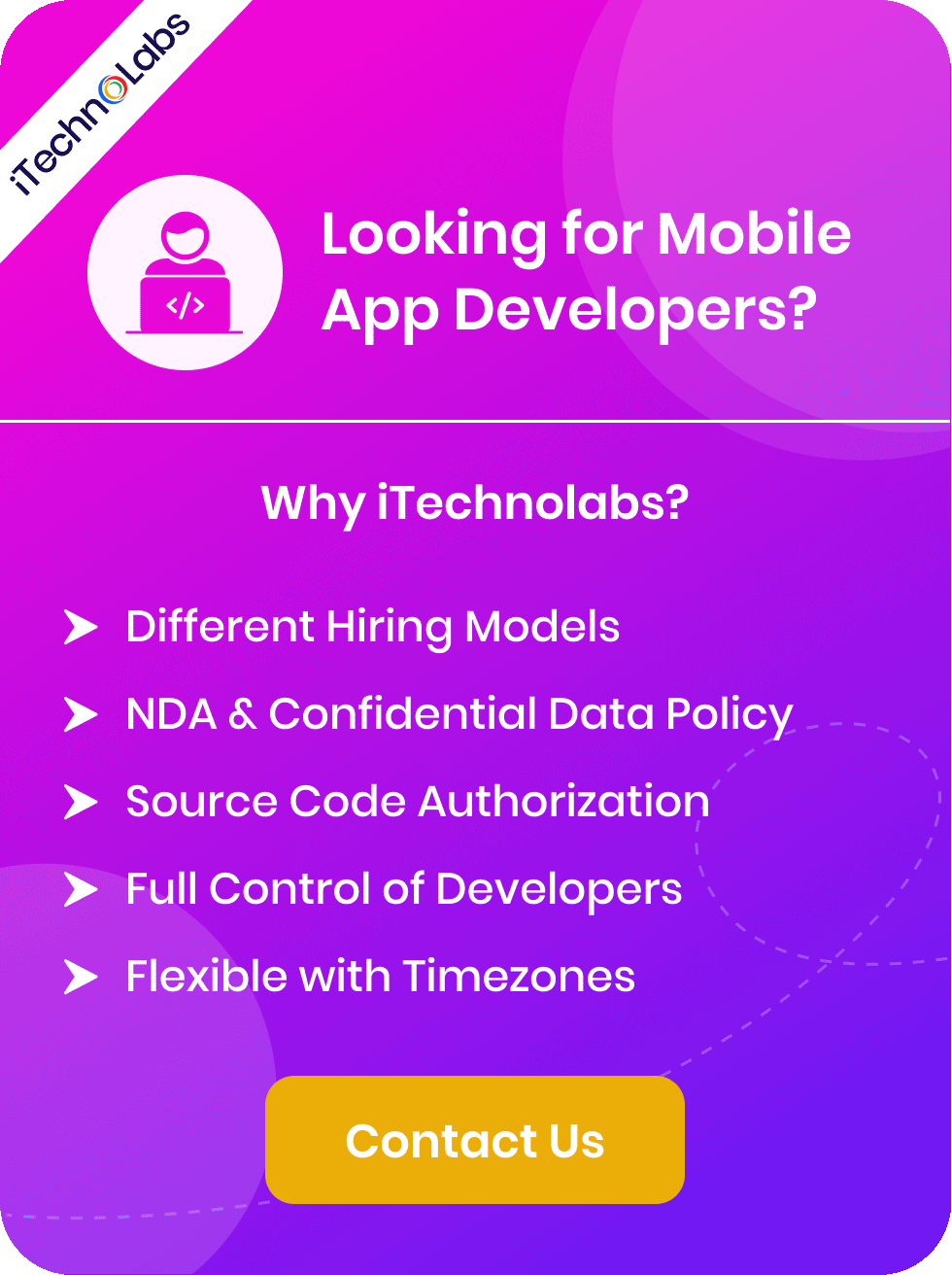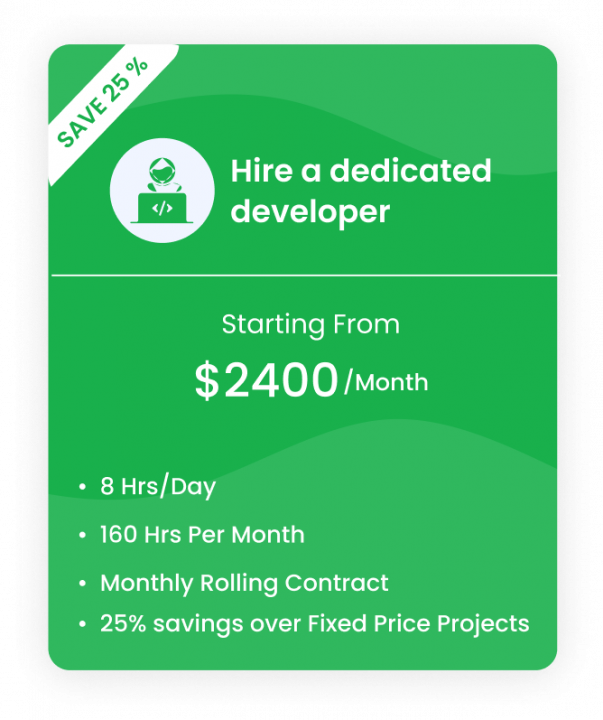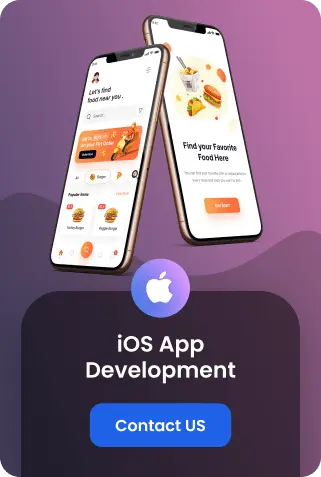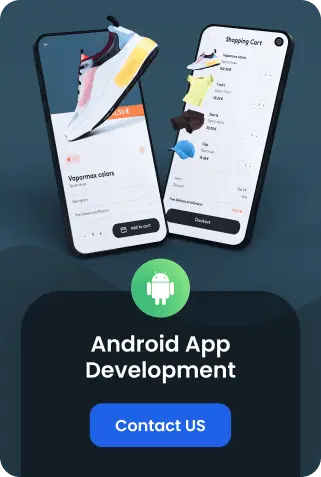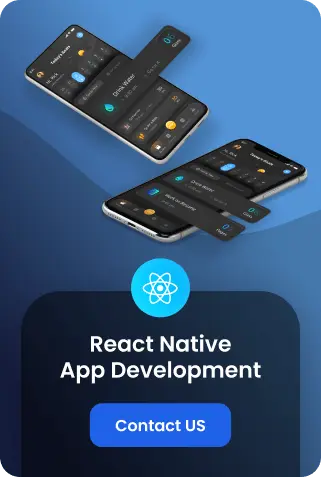Mobile messaging apps have become an indispensable tool in our day-to-day communication, fundamentally transforming the way we connect with each other. With the meteoric rise in smartphone usage coupled with ubiquitous internet connectivity, individuals across the globe are increasingly relying on messaging apps not just to stay in touch with family and friends, but also to maintain professional relationships with colleagues and engage with businesses.
This growing dependency on messaging apps for various forms of communication has sparked a significant upswing in the demand for messaging app development. Businesses, in particular, are awakening to the immense potential that integrating a messaging feature into their apps holds for boosting customer engagement and driving user retention. This realization is prompting more companies to invest in developing bespoke messaging solutions tailored to their unique needs.
However, developing a messaging app is no small feat. It requires meticulous planning, dedicated resources, and a substantial investment to bring a fully functional and user-friendly app to market. Factors such as the app’s complexity, the chosen platform(s), the level of security required, and additional features like voice and video calling functionality, all play a crucial role in determining the overall cost of development.
What Is A Messaging App?
Before delving into the nitty-gritty of messaging app development costs, let us first define what a messaging app is. A messaging app, also known as an instant messaging (IM) app, is an application that enables real-time communication between two or more users via text messages. Most modern messaging apps come equipped with advanced features such as multimedia file sharing, voice and video calling, group chats, and other interactive features that enhance user experience.
These apps use internet connectivity to send and receive messages, making them a cost-effective alternative to traditional SMS messaging. With the rise of smartphones and easy access to high-speed internet, messaging apps have become the go-to communication tool for millions worldwide.
Also Read: Estimating the Cost to Develop a Messaging App like Botim
Messaging Apps Statistics – What You Must Know?
To truly understand the potential of messaging apps, let’s take a look at some staggering statistics:
- As of 2021, the world has witnessed an incredible surge in digital communication, with over 2.7 billion individuals globally utilizing messaging apps to stay connected.
- The popularity and reliance on messaging apps are expected to continue their upward trajectory, with projections indicating that user numbers will swell to 3.09 billion by 2023.
- Dominating the landscape of digital communication, WhatsApp stands out as the most popular messaging app on a global scale, boasting over 2 billion active users who rely on it for daily communication.
- Looking ahead, the growth of WhatsApp is far from plateauing. It is projected that by 2025, WhatsApp’s user base will have expanded to over 2.5 billion, further cementing its position as a cornerstone of modern communication.
- In an interesting shift in digital behavior, messaging apps have now overtaken social media platforms in terms of monthly active users, signaling a change in how people prefer to communicate and consume information online.
How Much Does It Cost To Build A Messaging App?
Building a messaging app involves various factors that significantly influence the overall cost. The cost can range anywhere from $50,000 to over $200,000, depending on the complexity of the app, the features you decide to include, the development platform (iOS, Android, or both), and the region where the development team is based. Basic messaging apps without advanced features like encryption, voice, and video calling can be on the lower end of the spectrum. However, incorporating advanced features, a highly interactive interface, and ensuring data security measures can push the costs toward the higher end. Additionally, ongoing maintenance, server costs, and updates post-launch can add to the overall expenses.
When considering the development of a messaging app, key factors that influence cost include:
- Platform Choice: Developing for a single platform (iOS or Android) could be more cost-effective but limits user reach. A cross-platform app increases accessibility but also raises development costs.
- Features and Functionality: Basic functions like text messaging and media sharing are essential, but adding voice and video calls, end-to-end encryption, or stickers can significantly increase costs.
- Design and User Experience: A simple, user-friendly interface costs less than a highly customized, intricate design that enhances user engagement but requires more development time and resources.
- Backend Development: The foundation of the app’s performance, including data storage, synchronization, and security. Developing a robust backend is crucial but can be expensive, especially for apps requiring real-time data exchange.
- Location of Development Team: Labor costs vary greatly around the world. Developers from North America and Western Europe tend to have higher rates compared to those in Eastern Europe or Asia.
- Maintenance and Updates: Post-launch expenses such as server costs, bug fixes, updates, and new features must also be taken into account, contributing to ongoing operational costs.
Suggested: How Much Does it Cost to Create An App
Factors Affecting the Messaging App Development Cost
When discussing the cost of developing a messaging app, it’s essential to understand the factors that influence it. While there is no definitive answer to how much it costs to build a messaging app, several key considerations can help estimate the overall expenses.
1. Platform Type
The choice of platform(s) for a messaging app significantly impacts development costs. Native apps, built specifically for iOS or Android, offer the best user experience but require separate development teams and resources for each platform. Cross-platform apps are more cost-effective but may not have the same level of performance and integration with device features.
2. App Complexity
The complexity of the app plays a significant role in determining the overall development costs. For instance, a basic messaging app that includes standard features such as text chat and the capability to share images will generally be less expensive to develop. This is because the functionalities required are straightforward and require less time and resources to implement. On the other hand, creating a more advanced app that encompasses additional features like voice and video calling, an array of stickers, interactive games, or integrations with social media platforms will significantly increase the development costs. These advanced features demand more sophisticated programming, increased development time, and potentially larger teams to manage the complexities, thereby elevating the financial investment required.
3. UI/UX Design
The design of an app, particularly its user interface (UI) and user experience (UX), is a crucial element in the success of a messaging app. A well-designed app can attract more users and enhance their overall experience, leading to increased engagement and retention. However, designing a high-quality and visually appealing UI/UX design requires specialized skills and expertise, which can increase development costs. Additionally, as technology and design trends evolve, continuous updates and improvements to the UI/UX may be necessary, adding to ongoing development costs.
To minimize expenses in this aspect, some developers choose to use pre-designed templates or simpler UI/UX designs. However, this approach may result in a less unique and engaging app that fails to stand out among competitors.
4. Features Integration
Integrating additional features into a messaging app, such as voice and video calling, file sharing, or social media integrations, can significantly impact development costs. These features require specialized programming skills and may also require the use of third-party APIs or services, which may come at an additional cost. Furthermore, some features may have ongoing maintenance and operational expenses, such as server hosting fees or licensing fees for third-party services.
Incorporating new features also requires careful consideration and testing to ensure they function seamlessly with the existing app, which can add development time and costs. As a result, developers must carefully weigh the potential benefits of adding new features against the associated costs.
5. Development Team Location
The location of the development team can also impact the overall cost of building a messaging app. Hiring developers from countries with lower labor costs, such as India or Eastern Europe, may significantly reduce development expenses compared to hiring a local team based in countries with higher labor costs, such as the United States or Western Europe. However, there may be trade-offs in terms of communication and collaboration, which can impact the overall development process and quality of the final product.
On the other hand, hiring a local team may be more expensive but can result in better communication and collaboration, leading to a higher-quality app. Therefore, it is essential to carefully consider budget constraints and development priorities when choosing an appropriate location for the development team.
Popular Messaging Apps In the Market!
Some of the most popular messaging apps in the market today include WhatsApp, Facebook Messenger, WeChat, Line, and Telegram. These apps have a large user base and offer various features such as instant messaging, voice and video calls, file sharing, group chats, and more.
Each of these apps has its own unique features and target audience. For example, WhatsApp is popular among users who prioritize privacy and security, while Facebook Messenger is widely used for its seamless integration with the Facebook platform. WeChat, on the other hand, has a dominant presence in China and offers features such as mobile payment and social networking.
With so many messaging apps already in the market, it can be challenging to create one that stands out from the crowd. However, with a well-thought-out development plan and innovative features, it is still possible to create a successful messaging app that attracts a significant user base.
Read More: How Much Does It Cost to Develop a Chat App like WhatsApp, Telegram, Slack?
What Is the Maintenance Cost Of the Messaging App?
The maintenance cost of a messaging app can vary widely depending on several factors, including the complexity of the app, the number of users, server costs, updates, and customer support. On average, the annual maintenance cost can range from 15% to 20% of the original development cost. For a basic messaging app that costs around $50,000 to develop, the maintenance cost can be approximately $7,500 to $10,000 per year. This cost can significantly increase for more complex apps with larger user bases and more features, potentially reaching $20,000 to $30,000 or more annually. These costs cover essential aspects such as server hosting, cloud services, bug fixes, updates to comply with new operating system versions, and security enhancements to protect user data.
How To Reduce the Messaging App Development Cost?
Creating a messaging app can be an expensive endeavor, but there are ways to reduce the development cost without compromising on quality. One way is by using open-source technologies and libraries instead of building everything from scratch. This allows developers to save time and resources while still creating a unique and functional app.
Another cost-saving measure is to focus on essential features first and then gradually add more advanced features as the app gains traction and generates revenue. This approach not only helps to keep the development cost in check but also allows for feedback from early users, which can help guide future feature updates. Additionally, outsourcing certain tasks such as design or coding to experienced professionals can also lower costs compared to hiring a full-time team.
1. Build an MVP
An MVP, or Minimum Viable Product, serves as the foundational version of your messaging application, equipped with merely the essential features required to meet the initial needs of early adopters. Adopting this strategy facilitates the earlier introduction of your app into the market, enabling you to begin generating revenue sooner while continuously enhancing the app with more sophisticated functionalities. The development of an MVP is a prudent approach to managing resources efficiently. By focusing on the core components that serve the primary purpose of the app, it significantly reduces the need for exhaustive testing, debugging, and the incorporation of additional features during the early phases of development. This methodology not only streamlines the path to market entry but also provides valuable insight into user preferences and behaviors, guiding further development in a direction that aligns with actual user demand.
2. Maintain UI/UX Simplicity
One of the most significant advantages of building an MVP is that it allows for a more streamlined and focused user interface (UI) and user experience (UX). Instead of attempting to incorporate all possible features, the development team can focus on perfecting a select few, ensuring a fluid and intuitive interface for users. This simplicity not only improves the initial usability of the app but also simplifies future updates and additions to the app, as there are fewer features to integrate and test. Additionally, a simple UI/UX is attractive to users and can help differentiate your messaging app from others on the market.
3. Hire Skilled Testers
While a Minimum Viable Product (MVP) might not necessitate the comprehensive testing that fully developed applications undergo, it remains critical to verify that the included features work as intended and contribute to a satisfactory user experience. Engaging the expertise of skilled testers plays a pivotal role in this phase, as they can uncover and pinpoint any glitches, bugs, or usability issues that must be resolved prior to exposing the app to a broader audience. This step is not merely about troubleshooting; it’s about refining the user’s interaction with the app to ensure it’s as intuitive and effective as possible. By investing in experienced testers, companies can sidestep the pitfalls of negative feedback that can tarnish an app’s reputation from the outset. Moreover, these professionals provide invaluable insights into user behavior and preferences, which can inform future development and optimization efforts. Thus, dedicating resources to thorough testing before launch can significantly enhance the app’s chances of success and user satisfaction.
4. Don’t Hurry the Process
Finally, it’s essential to remember that quality takes time. Rushing through the development and testing phases in a race to launch can result in a subpar product that fails to meet user expectations. While there may be pressure from stakeholders or competitors to get the app on the market quickly, it’s essential to prioritize thoroughness and attention to detail. Moving too fast can lead to costly mistakes and damage to the app’s reputation, resulting in negative reviews and a decrease in user trust. Instead, companies should aim to strike a balance between speed and quality. This means setting realistic deadlines and expectations for all parties involved, including developers, designers, testers, and stakeholders. It also involves effective communication throughout the process to ensure everyone is on the same page and has the same vision for the app. By prioritizing a well-planned and executed development process, companies can ensure that their app is built with care and precision, resulting in a higher quality product that resonates with users.
5. Outsource App Development
For companies without an in-house team of developers, outsourcing app development can be a cost-effective and efficient option. Outsourcing allows businesses to tap into specialized expertise and experience without having to invest in hiring and training their own team. This can be especially beneficial for small or medium-sized companies with limited resources.
When considering outsourcing app development, it’s essential to thoroughly research potential partners. Look for companies with a proven track record of successful app development projects and positive client reviews. Consider their expertise, experience, and communication processes to ensure they align with your project goals and expectations.
Outsourcing can also help speed up the development process. By leveraging an external team’s resources and skills, companies can potentially launch their app faster than if they were to develop it in-house. This can provide a competitive advantage in the rapidly evolving app market.
6. Access Mobile-specific Features
Developing a successful mobile app also involves utilizing and optimizing specific features that are unique to mobile devices. These features can include push notifications, GPS location tracking, camera access, and more.
Incorporating these features into your app can enhance the user experience and make it more engaging and personalized. For example, push notifications can be used to send timely reminders or updates to users, while GPS location tracking can be used for location-based features such as finding nearby businesses or events.
However, it’s important to use these features in a way that adds value to the user experience and aligns with your app’s purpose. Overusing or misusing these features can lead to user frustration and potentially harm your app’s reputation. Therefore, careful consideration and planning should go into incorporating these features into your app’s design.
How can iTechnolabs help you to build a Messaging App?
At iTechnolabs, we have a team of experienced and skilled app developers who can help you build a successful messaging app that meets your specific requirements and goals. Our expertise in developing mobile apps across various platforms ensures that your app is optimized for both functionality and user experience. We strongly believe in transparent communication with our clients throughout the development process. This allows us to understand your vision and provide valuable insights and suggestions to improve your app. Our agile development approach also allows for flexibility in incorporating changes and updates as needed.
- Tailored Development Plans: iTechnolabs starts by understanding your specific needs and goals, and creating a customized development plan that aligns with your messaging app’s vision and budget.
- Advanced Feature Integration: Our team excels in incorporating cutting-edge features such as end-to-end encryption, instant notifications, and multimedia message support to enhance the user experience.
- Cost-Effective Solutions: We focus on delivering high-quality messaging app development services at competitive prices, ensuring you get the best value for your investment.
- Expert Team: With a team of seasoned developers, we leverage the latest technologies and frameworks to deliver robust, scalable, and efficient messaging apps.
- Agile Methodology: Our agile development approach ensures flexibility in the development process, accommodating changes and incorporating feedback effectively to meet project timelines.
- Post-Launch Support: iTechnolabs provides continuous support and maintenance post-launch to ensure your messaging app remains updated with the latest features and security measures.
Important: Top 35 Texting Games to Play in 2024 (Perfect for Messaging)
Are you planning to build a messaging app?
Choosing iTechnolabs for your messaging app development projects offers significant advantages in managing development costs effectively. First, our tailored development plans are specifically designed to align with your budgetary constraints while ensuring that your app does not compromise on quality or functionality. This personalized approach helps avoid unnecessary expenses by focusing solely on features and technologies that add value to your messaging app.
Furthermore, our expertise in advanced feature integration allows us to incorporate essential features efficiently, reducing the time and resources required for development, and thereby lowering overall costs. Our cost-effective solutions ensure that you receive a high-return investment by balancing affordability with high-quality app performance. Additionally, iTechnolabs’ adoption of agile methodology permits flexibility and adaptability throughout the development process. This approach minimizes risks and costs associated with changes, as adjustments can be made swiftly without significant increases in time or budget.
- Cost-Effective Development Plans: iTechnolabs creates customized development strategies that fit within your budget, focusing on delivering quality and functionality without overspending.
- Advanced Feature Integration: Our expertise in incorporating essential messaging features efficiently helps in reducing development time and cost, offering a more economical solution without compromising quality.
- Agile Development Process: The agile methodology adopted by iTechnolabs promotes flexibility and efficiency, allowing for cost-effective changes and updates during the development cycle.
- Continuous Post-Launch Support: With iTechnolabs, the investment in your messaging app extends beyond launch. Continuous support and maintenance ensure the app remains competitive and secure, avoiding additional costs related to major updates or security breaches.
- High Return on Investment (ROI): By balancing affordability with high-quality app performance, iTechnolabs ensures that your investment in the messaging app yields substantial returns, enhancing your business value and market position.
Conclusion:
Investing in a messaging app with iTechnolabs is a strategic and financially sound decision. Our cost-effective development plans, advanced feature integration, agile methodology, continuous support, and high ROI make us the ideal partner for creating a successful messaging app that meets your business needs. Contact us today to learn more about our services and how we can help you achieve your goals. So, don’t hesitate, reach out to us and start building your dream messaging app with iTechnolabs.
FAQ About Messaging App Development!
Q1. How To Develop A Messaging App?
A1. Developing a messaging app is a complex process that entails several crucial steps, such as conceptualization, design, development, testing, and launch. To begin with, it’s vital to gain a deep understanding of your target audience and their specific messaging needs. This foundational step ensures that the app you’re building resonates with its intended users. Next, the design phase involves crafting the user interface and experience, making sure it’s intuitive and user-friendly. During the development stage, the core functionality of the app is brought to life through coding. This is followed by rigorous testing to identify and fix any bugs, ensuring the app’s stability and performance. Finally, the launch phase introduces your app to the world. Throughout this entire process, considering the features you wish to include in your app is paramount.
Q2. How Long Does It Take To Build A Messaging App?
A2. The time it takes to build a messaging app can vary depending on factors such as the complexity of the app, the features included, and the resources allocated for its development. On average, it can take anywhere from 4-6 months or more to develop a messaging app. However, with an experienced development team and efficient project management, this timeline can be significantly reduced. Additionally, it’s crucial to keep in mind that maintenance and updates are ongoing tasks even after the initial app launch.
Q3. How To Make Money From A Messaging App?
A3. There are several ways to monetize a messaging app, with the most common being through in-app purchases, subscriptions, and advertisements. In-app purchases can range from purchasing additional features or unlocking premium content within the app. Subscriptions can be offered for access to exclusive content or advanced features on a monthly or yearly basis. Alternatively, you can also generate revenue by allowing businesses to advertise on your platform. Additionally, you can also consider offering a freemium model, where the basic features of the app are free to use, but users have the option to upgrade for a fee to access more advanced features. Ultimately, the best approach will depend on your target audience and the unique selling points of your messaging app. It’s essential to carefully consider the options and choose a monetization strategy that aligns with your app’s goals and values, as well as provides value to your users. Moreover, considering different streams of revenue can also help to diversify income sources and increase overall profitability.
Q4. How Much Does it Cost for Chat App Development?
A4. The cost of developing a messaging app can vary greatly depending on several factors, including the features and complexity of the app, development team experience and location, project timeline, and ongoing maintenance costs. On average, it can range from $50,000 to $500,000 or more. It’s crucial to conduct thorough research and create a detailed project plan to get a more accurate estimate for your specific app development needs. Additionally, it’s also essential to budget for ongoing maintenance and updates after the initial development phase. Overall, investing in high-quality development is crucial for creating a successful messaging app that can generate revenue and provide value to users. Therefore, it’s important to carefully consider the costs and plan accordingly to ensure a successful and profitable app in the long run. So, it’s essential to budget for ongoing maintenance and updates after the initial development phase, as well as allocate resources for marketing and promotion efforts to attract users to your messaging app.
Q5. Why Must Businesses Invest In Messaging App Development?
A5. Investing in messaging app development can provide numerous benefits for businesses, including improved communication and collaboration among employees, increased efficiency and productivity, and enhanced customer engagement. Messaging apps also offer a convenient and accessible way for businesses to connect with their audience and share information, promotions, and updates in real-time. With the growing popularity of messaging apps, investing in their development can also offer businesses a competitive advantage and help them stay relevant in an increasingly digital world. Additionally, messaging apps can provide a platform for businesses to gather valuable data and insights on their customers’ preferences, behaviors, and needs, which can inform future marketing strategies and product development.
